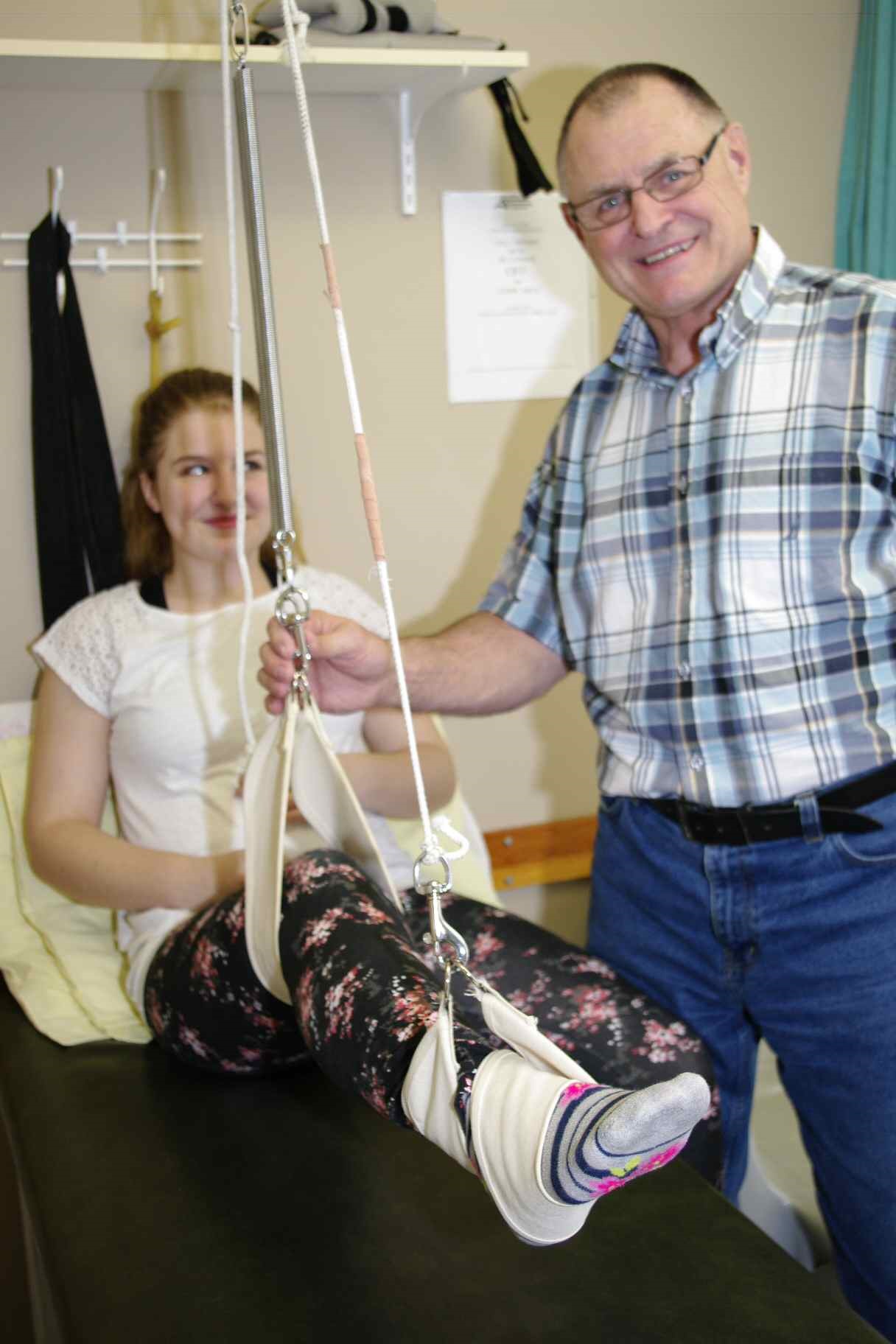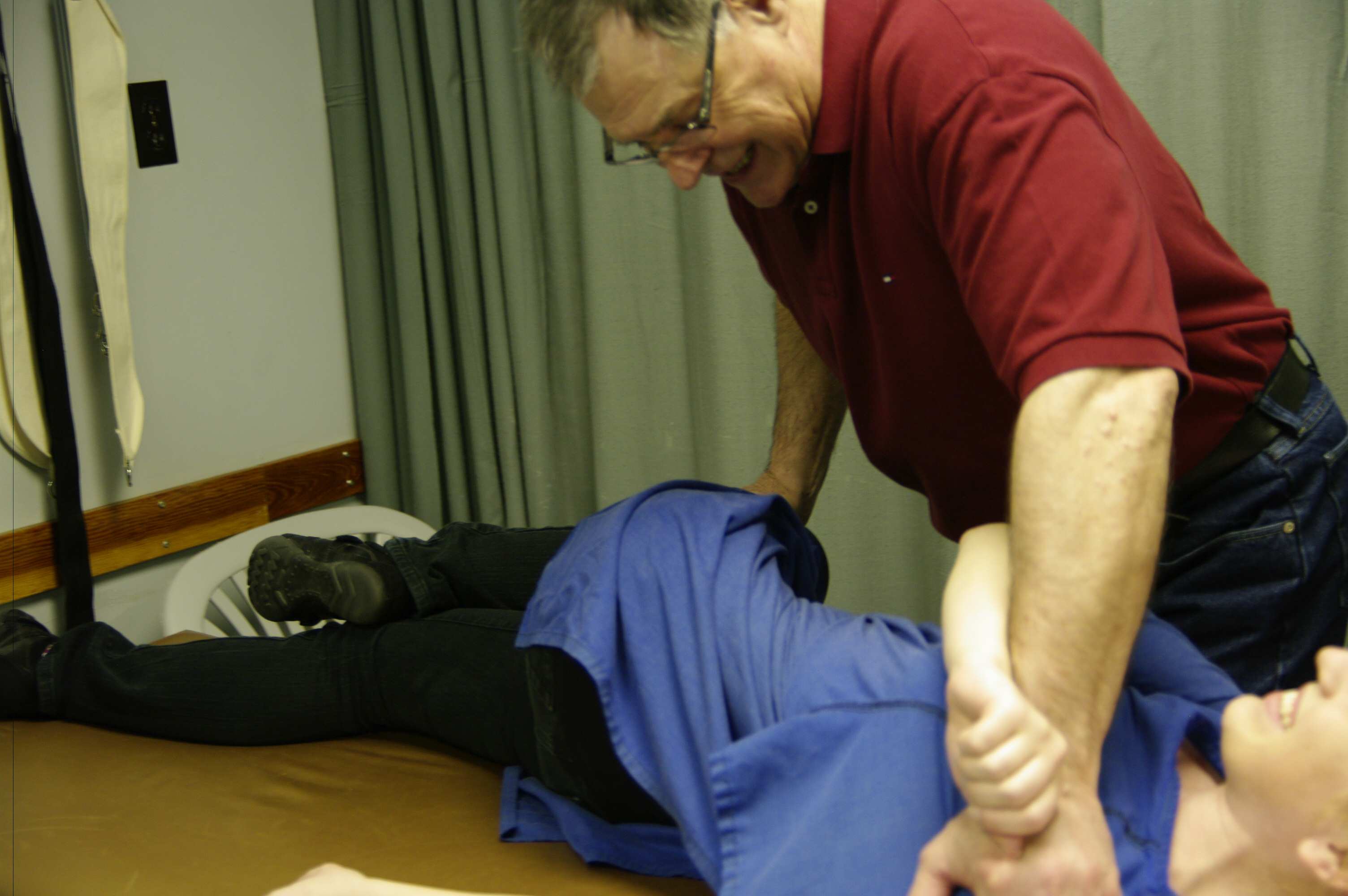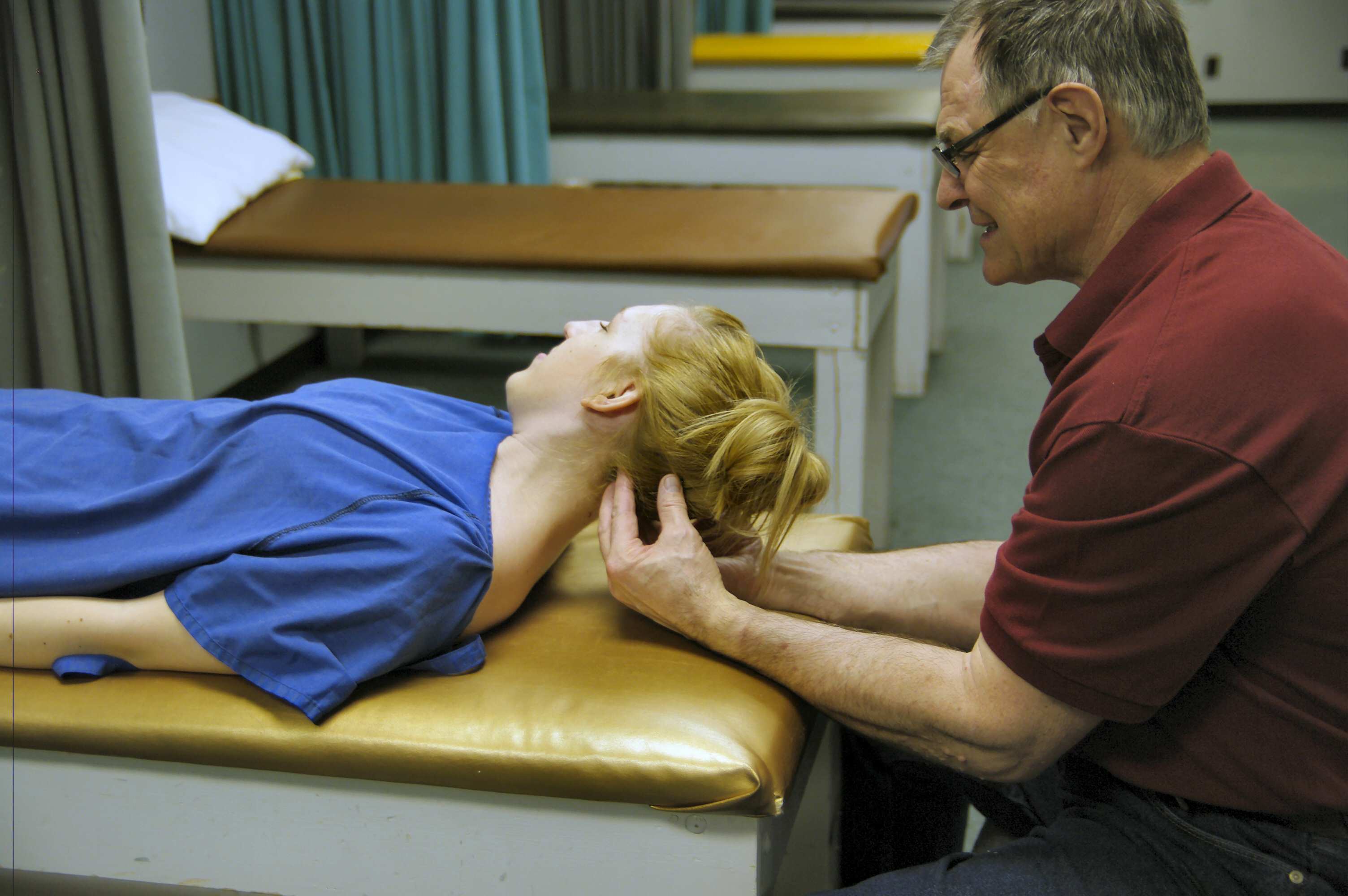Services - Injuries
Sports, Work and Auto
A Detailed History
Injuries can only be successfully treated when the cause of the problem is fully investigated and corrected; therefore, a detailed history is mandatory and a complete posture, gait, and biomechanical assessment must be made. Careful history taking is of the utmost importance to ascertain the location, nature, behaviour and onset of symptoms, etc.
This is followed by a physical examination where a methodological approach is adopted. Sometimes further investigative procedures will be needed to confirm the diagnosis. It is not acceptable to treat symptoms without first establishing the underlying cause. A thorough evaluation of all the factors contributing to the patient's pattern of symptoms is essential so that a specific treatment plan can be established.
Goals of treatment and rehabilitation:
- Protect the injured tissues to allow healing and to control the early inflammatory phase.
- Rehabilitate flexibility, strength, proprioception, and muscle imbalance, and control physical activities with the aid of taping and splinting.
- Sport/Work-specific activities must be tested to ensure the individual can return to that sport/work safely.
Sports Injuries
Sports injuries require treatment by someone who specializes in the prevention and care of musculoskeletal disorders (muscles, bones, joints), especially as they relate to athletics and the pursuit of physical activity. Active lifestyle related injuries are as unique as the individuals who are suffering from them. Extensive knowledge of the human body, how it works during sport and recreation and the musculoskeletal system (muscles, bones, joints) affords the therapist the knowledge to focus on injuries and how to prevent and treat them.
The physiotherapist plays an integral part in the multi-disciplinary approach to the management of sports injuries. The aim of physiotherapy is to treat and fully rehabilitate the athlete post-injury, post-operatively, to prevent further injury and to return the athlete to sport in the shortest possible time.
Physiotherapists have a wide range of proven and documented approaches to treatment from which to choose. Prompt assessment and diagnosis is vital in the successful treatment and rehabilitation of sports injuries. Athletes suffering from a recent injury or a recurring problem can benefit from the expertise of a specialist team. A multidisciplinary team approach is ideal as cross-referral may take place in order to rehabilitate the whole person and not just the injured part.

If proper rehabilitation is not undertaken, the athlete may be competing too soon, with residual instability, proprioceptive disturbance and muscle weakness and imbalances. Individual programs must be planned and implemented for each athlete. This would include sport-specific exercises, adaptation to new postures to correct muscle imbalance, taping and strapping and a home exercise program.
The athlete must be progressed carefully from one phase to the next, with the criteria for rogression based on function, not time. Sport-specific functional testing is an essential part of moving from one phase of rehabilitation to the next, and finally, to full participation. Over training must be very carefully avoided in all of these phases, and training is monitored so that full activity does not occur before full recovery has taken place.
It is obvious that prevention is better than cure and the physiotherapist will always advise the patient on how to prevent recurrence of the injury on return to sport.
A physiotherapist assesses injuries and conditions, uses contemporary rehabilitative techniques, therapeutic modalities, soft tissue mobilization, physical reconditioning, and supportive strapping procedures to promote an environment conducive to optimal healing in preparing the individual for safe reintegration into an active lifestyle.
Work Injuries
Work related injuries are very common but also different for every person and in every work setting. They can occur suddenly, like a slip or fall, or they can build up over time with repetitive strain. Pain, aches, swelling and stiffness are the body’s most common warning signs and they should not be ignored. A vicious cycle can start. Pain causes less activity which causes more stiffness and weakness, which causes more pain and less activity. These problems get worse if you do not take steps to solve them.

The top six types of work related injury are:
- Shoulder tendon and joint sprains.
- Low back sprains and strains.
- Hand tendon and joint injuries (repetitive strain and tendonitis).
- Elbow tendon and joint injuries (e.g. repetitive strain like tennis elbow).
- Bone fractures.
- Low back disc injuries.
Research has proven that the sooner a person starts physiotherapy after a work injury, the quicker they will recover in the short and long term. A physiotherapist will thoroughly check and diagnose your condition and develop a treatment plan that best meets your needs and preferences.
What are the benefits?
- Reduce or eliminate pain.
- Heal faster.
- Improve with less or no medication.
- Return to work safely and pain free.
- Learn how to treat your condition on your own.
- Understand your condition and learn there are no mysteries.
- Get back to your passions and pursue life!
Auto Injuries
The most common auto injury is whiplash of the neck. Whiplash type injuries account for approximately 50% of all auto injuries. Whiplash injuries occur in motor vehicle accidents when the vehicle is hit from behind. Other types of neck and back injuries similar to whiplash occur when the vehicle is hit from the side or front.
Whiplash causes the head to be thrown up and back and then forward from the impact. It happens in a fraction of a second and often people don’t realize it has happened. It causes many of the muscles of the neck and back to be overstretched and possibly torn (strain). It also causes the joints of the neck and back to be sprained with ligaments around the joints getting overstretched and maybe partially torn. A head rest that is the proper height will reduce the amount of whiplash.
Symptoms from auto injuries usually show up within 48 hours but often do not occur for up to two weeks. These are your body’s warning signs and should not be ignored. A vicious cycle can start. Pain causes less activity which causes more stiffness and weakness, which causes more pain and less activity. This delays healing.
Symptoms are usually:

- Pain and aches in the neck and/or back.
- Stiffness in the neck, shoulders or back.
- Headaches (front or back of head).
- Fatigue and weakness in the neck and back areas.
Other possible symptoms are:
- Tingling in one or both hands or feet.
- Light-headedness.
- Difficulty sleeping and concentrating.
- Overall fatigue.
Research has proven that the sooner a person starts physiotherapy after their auto accident the quicker they will recover for the short and long term.
Service Links
Physiotherapy
